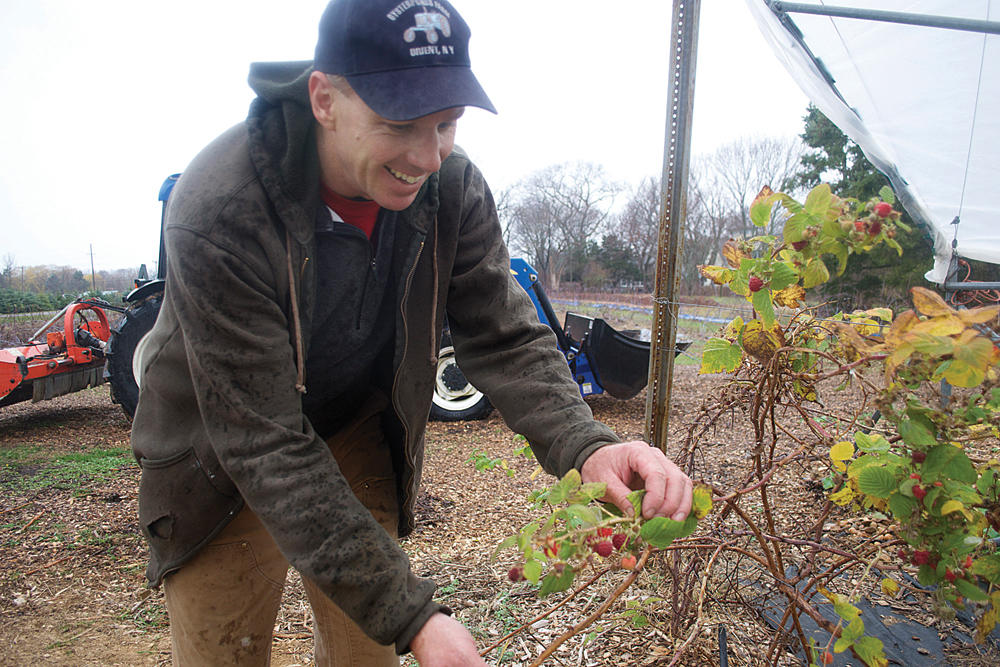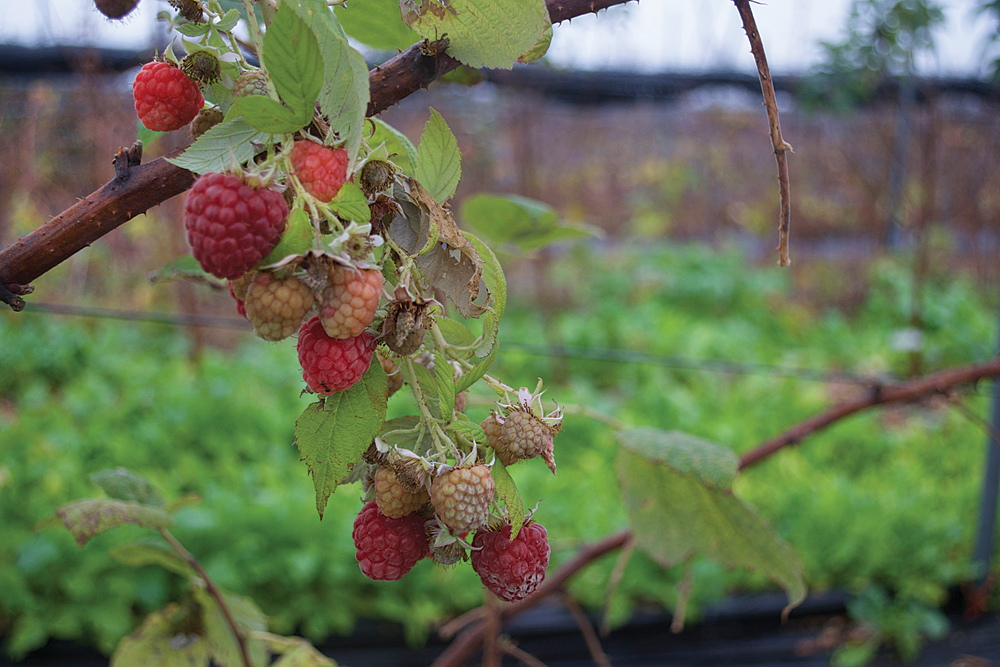Dreaming of a white Christmas in Riverhead? Not this year

Looks like you’ll have to settle for sand instead of snow and walks on the beach instead of ice-skating this Christmas in Riverhead.
This has been one of the warmest Decembers on record for Long Island — and the entire Northeast — with temperatures that call more for ugly holiday T-shirts than ugly sweaters.
And although there are some casualties associated with the warm weather, including a delayed opening for Greenport’s Mitchell Park ice-skating rink, the weather brings with it a variety of benefits, from longer crop seasons to less risk of the flu virus spreading.
At the National Weather Service station in Islip, this year’s average temperature from Dec. 1 to 20 was 47.7 degrees, a full 10.5 degrees above the normal December temperature on record there.
In Mattituck, the average temperature through the first 20 days of the month was a similar 47 degrees with a single-day high of 59 degrees on Dec. 12, according to data recorded by Leonard Llewellyn, a cooperative observer for the NWS. That is nine degrees warmer than the first 20 days of December 2014.
These figures put December 2015 on pace to be the warmest since at least 1984, the earliest year for which data is available from the Islip station. The previous record was 41.2 degrees set in both 1984 and 2001. This means that through its first three weeks, this December is more than six degrees warmer than average.
And with Islip forecasting 64 degrees for Christmas Eve and 58 degrees for Christmas Day, it’s possible that average will increase even more.
In short, this month might not just surpass the December record — it might also smash it altogether.
However, few would complain about that, especially since some meteorologists claim the unusual warmth is more a result of El Niño — a cyclical pattern of warm currents in the Pacific — and less a foreboding sign of climate change. The effects of El Niño could last through the winter, according to the National Oceanic and Atmospheric Administration.
In fact, the balmy temperatures have actually been beneficial for some, like construction workers and farmers.

Riverhead Highway Superintendent Gio Woodson said his department has been able to continue projects later into the year than it normally would. Cold temperatures tend to prevent the laying of asphalt, so under more typical circumstances, workers would have had to stop road repairs by now.
“[Warm weather] actually gives us more time to get more things done,” he said. “We don’t have to rush and do things right away.”
Both Mr. Woodson and his Southold counterpart, Vincent Orlando, indicated the weather helped their departments financially since there’s no need to buy sand or salt in preparation for snowfall, or to pay overtime for plow drivers.
After a brutal start to 2015 that dumped several feet of snow on their lots, some local car dealers are taking advantage of the unexpected warm weather to recoup earlier losses.
William Fields, vice president and general manager of Apple Honda in Riverhead, said poor weather “definitely affects sales.”
“It didn’t help, and we had a couple of closures,” he said. “When you close down completely, that takes one day’s sales out of the mix.”
Now, however, sales of new cars are up, and he expects his business to meet its initial projected target for the year after falling behind due to the snow.
“When you’re out looking for a new car, you’re outside,” he said. “Having poor weather conditions where people don’t want to go outside — it definitely hampers sales.”
Another possible benefit this year is that traditional winter illnesses are weakened by warmer weather. Dr. Susan Donelan, clinical assistant professor of infectious diseases at Stony Brook University, pointed to a 2007 study that found the influenza virus to be “more stable,” or stronger, in cold weather.
“In general the other respiratory viruses act similarly to influenza in regards to transmissibility,” she wrote in an email.
However, the cold weather that propagates the flu also kills off most causes of seasonal allergies.
“Once a hard frost has hit, many allergens die off, and certainly a cover of snow will physically separate the allergy sufferer from most outdoor allergens during wintertime,” Dr. Donelan said. “Also, trees, grasses, etc., are not actively growing [and, thus, not producing pollen and other common allergens], so they are not present in the outdoor environment during the cold weather.”
The warmth has also helped certain aspects of agriculture on the North Fork, according to Sandra Menasha, Cornell Cooperative Extension’s vegetable and potato specialist. Since the temperatures have not yet dropped low enough to induce crop-killing frost, farmers have been able to continue harvesting fall crops, including spinach, lettuce and brussels sprouts.
“The growers are able to extend their season and harvest later into the season, and that leads to increased sales and a little boost in profits for them,” Ms. Menasha said. “With the winter markets that happen — the Riverhead farmers market that happens all winter long— this has definitely been a boost for what they have been able to provide.”
Grapes, however, are unlikely to be affected either way, said Alice Wise, CCE’s viticulture specialist. The only potential change is that vineyard workers will be able to prune the vines in more pleasant conditions.
“It hasn’t been at all a disadvantage for grapes,” Ms. Wise said. “It doesn’t really affect the flavors or aromas of the vine.”
At Orient’s Oysterponds Farm, raspberries — typically a summer crop — appeared on the vines as recently as last Thursday, mere days away from Christmas. Tom Stevenson, the farm’s co-owner, said that variety of berry, the Tula Magic, will bloom almost continuously, but even then, most plants are dormant by Halloween or Thanksgiving at the latest.
Well, not this year.
“We’re already doing season extension, but this is another extreme,” Mr. Stevenson said. “You knew it was unseasonably warm, but I was really taken aback by this.”
With Vera Chinese
Photo caption: Farmer Tom Stevenson of Oysterponds Farm shows off some raspberries till on the vine in December. (Credit: Vera Chinese)








